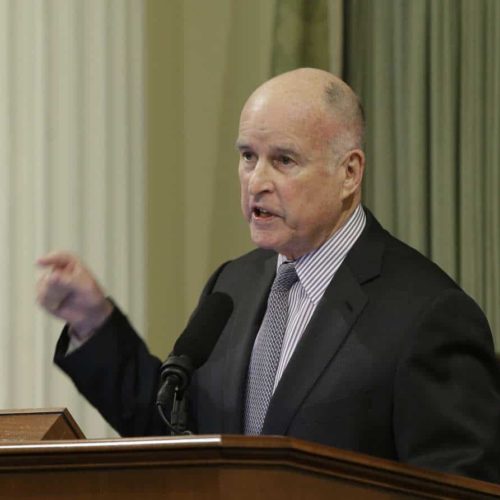Introduction
As California regulators oversaw an oil boom, industry representatives lobbied to ease drilling rules and shape new regulations. Four years of emails obtained by the Center for Public Integrity suggest a comfortable — at times, chummy — relationship between Gov. Jerry Brown’s appointees and the industry. Exchanging hundreds of notes, state officials at the California Department of Conservation and the Division of Oil, Gas and Geothermal Resources (DOGGR) forwarded internal memos to trade groups, alerted oil companies of legislative inquires and coordinated media responses with industry. Teresa Schilling, a state spokeswoman, said California’s oil agency “communicates openly with all stakeholders” and seeks input from a variety of groups when writing regulations. “That information informs and strengthens regulations and empowers our inspectors to ensure operators are complying with regulations,” she said. Still, Schilling acknowledged that some emails produced in response to a Center public-records request “do not reflect the Department’s values and principles today.”
2013
As Kern County worked with the oil industry to develop a new permitting process for oil drilling, Mark Nechodom, then head of the state Department of Conservation, drafted a letter of support to the chairman of the county’s board of supervisors. But before sending it, he shared a copy with Catherine Reheis-Boyd, president of the Western States Petroleum Association. “Any thoughts?” Nechodom asked. “We’re in this partnership together, so it’s not inappropriate to share this with you to make sure we’re sending the right message.”
He added: “Thanks for any coaching.”
“I think the message you are communicating is spot on,” Reheis-Boyd responded, “and will be received quite favorably by the Kern County Board and will be most helpful.”
2014
While regulators were developing rules for hydraulic fracturing, or fracking, they also appeared at a number of public meetings organized by WSPA to calm public fears about the controversial extraction technique. Before a gathering with farmers, officials with WSPA and the Department of Conservation coordinated their presentations.
“My plan for tonight is to give a very brief talk on our views of the safety of fracking,” wrote Tupper Hull, a WSPA vice president. “Are you OK with that?”
“It sounds fine,” replied Jason Marshall, the conservation department’s deputy director. “I WILL have to say something about how we are the regulator and not the advocate, but it’s what you’d expect.”
“I think you SHOULD present yourself as the regulator,” Hull wrote. At an earlier meeting, he said, “Some folks thought the Department seemed a little too cordial with oil. Be hard on us.”
2015
In February, lawmakers held an oversight hearing on fracking and pressed Steven Bohlen, the new oil and gas supervisor, about whether there were significant amounts of the carcinogen benzene in fracking fluid. No, he said firmly. The chemical was a natural byproduct of the extraction process.
“An outstanding job,” an oil industry lobbyist wrote to Bohlen after the hearing. “Your efforts are certainly not going unnoticed.”
“I … look forward to digging our way out of this mess together,” Bohlen replied.
2016
In September, Marshall enrolled in a leadership training course. As part of the course he asked a handful of oil industry representatives to evaluate him in an anonymous survey. “I am hoping that through your candid assessment of me,” he wrote, “I will be able to identify areas to improve my leadership skills as well as capitalize on strengths I may not perceive.”
Read more in Environment
Carbon Wars
Getting under the hood: Our methodology
How we investigated schools near sources of traffic pollution nationwide
Carbon Wars
Big Oil’s grip on California
In America’s greenest state, the industry has spent $122 million in the past six years to shape regulation and legislation. It wins more than you think.

Join the conversation
Show Comments